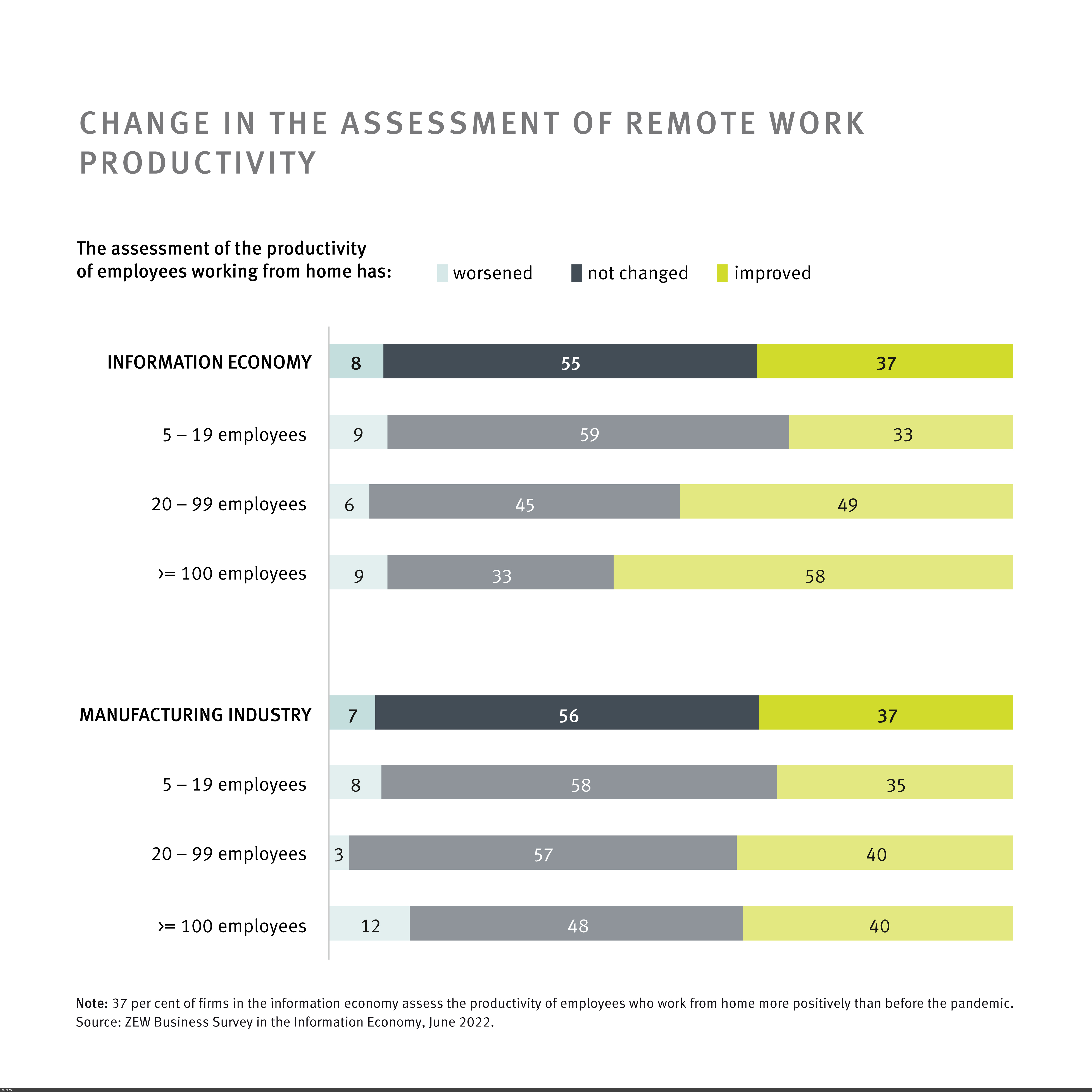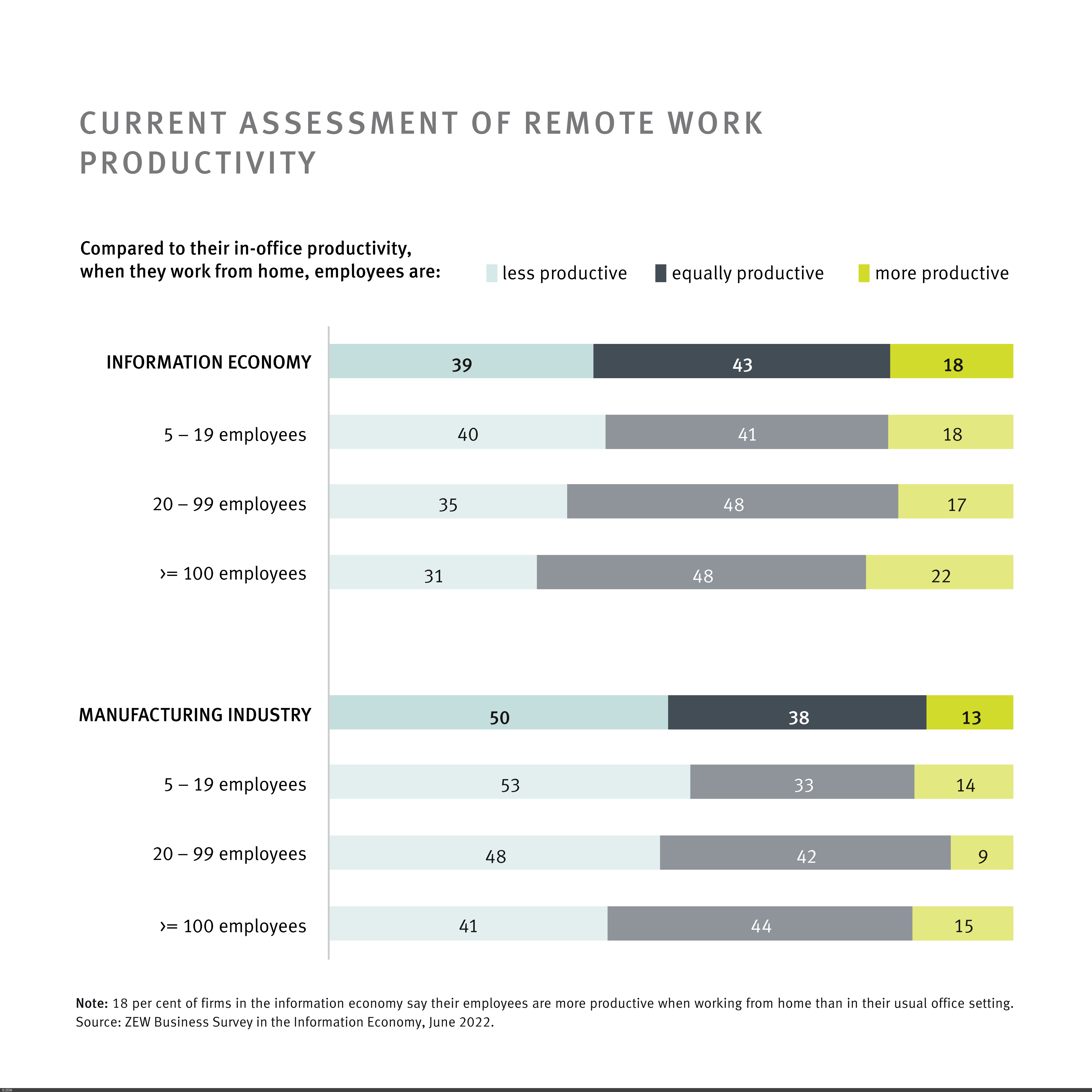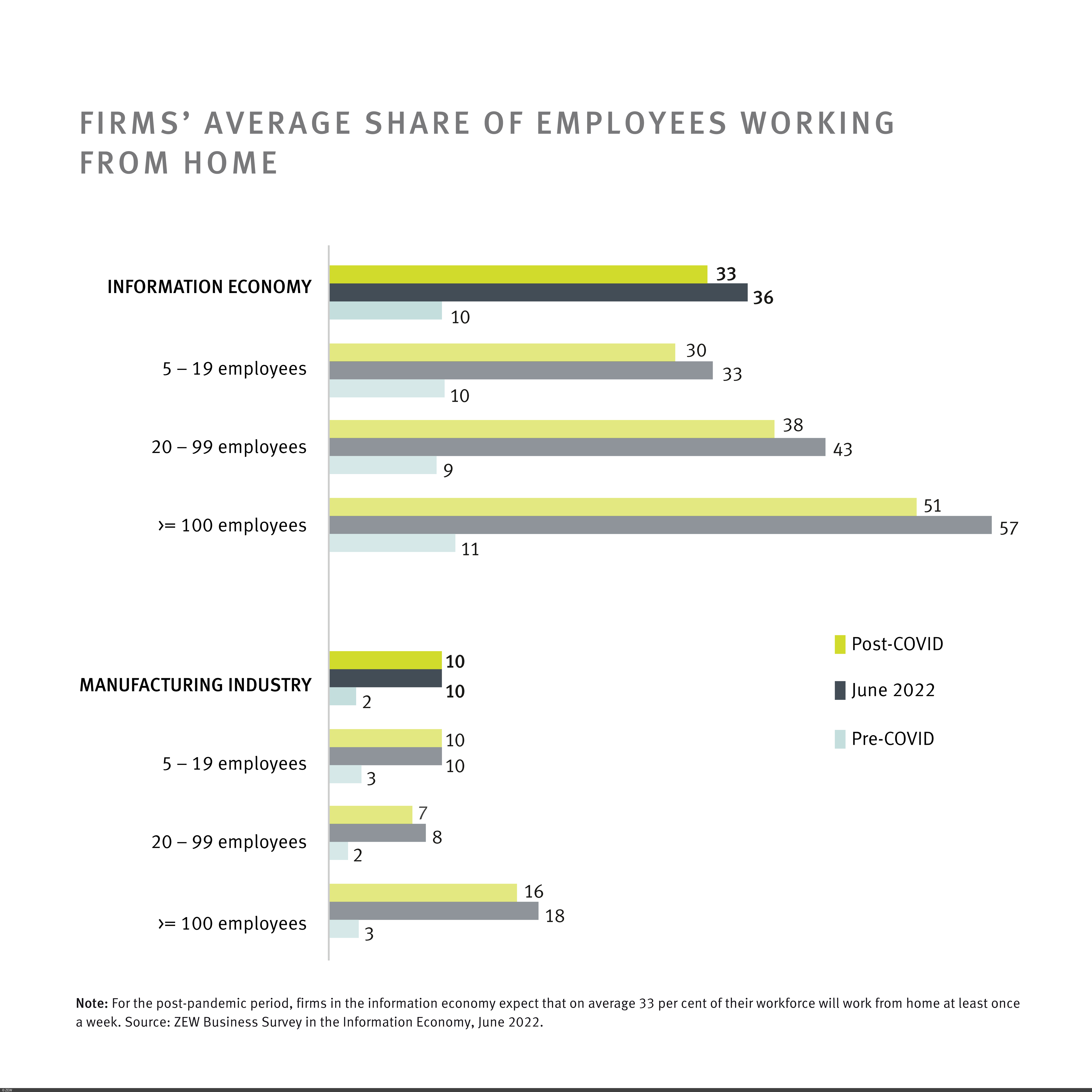One in Three Firms Views Remote Work More Positively Than Before the Pandemic
ResearchBusiness Survey in the Information Economy and Manufacturing Industry
Due to the outbreak of the COVID-19 pandemic, almost overnight employees and firms worldwide had no choice but to experiment with remote work. As a result, working from home is now much more common in Germany than it was before the pandemic. A recent survey conducted by ZEW Mannheim shows that firms expect the increased usage of working-from-home arrangements to continue after the pandemic. In addition, the survey provides representative results on how firms’ opinions on working from home have changed over the course of the pandemic and whether remote work impacts employee productivity.
In June 2022, almost 1,100 firms from the manufacturing industry and the information economy, which includes the ICT sector, media service providers and knowledge-intensive service providers, took part in the ZEW survey. They were asked how productive employees are while working from home compared to their usual office setting. In addition, firms were asked how their perception of remote work productivity has changed over the course of the pandemic. “More than one in three firms assess the productivity of employees who work from home more positively than before the pandemic,” says Dr. Daniel Erdsiek, researcher in ZEW’s “Digital Economy” Unit, commenting the results of the survey. “This is the case with firms in both the service sector and the manufacturing industry.”
The experiences and lessons inevitably learned from experimenting with remote work during the pandemic are one possible explanation for why many firms’ views on remote work productivity have improved. Significantly fewer firms, only around eight per cent, now have a more negative opinion of remote work productivity than they had before the pandemic. Overall, the pandemic has improved firms’ opinion of remote work rather than worsened it. Nevertheless, the majority of all firms, 55 per cent, have not noticeably changed their assessment of remote work productivity. How likely a firm is to improve its assessment depends largely on its size. “In the information economy, almost 60 per cent of large firms have changed their assessment of remote work productivity for the better since the start of the pandemic. This is also true for about half of the smaller firms with 20 to 99 employees,” says Erdsiek.
More than half of all firms say that working from home does not lower productivity
“In the information economy, 61 per cent of firms report that employees working from home are at least as productive as they are in an office setting,” says Erdsiek. Of this group, 43 per cent of the firms say that the productivity of remote work and office work is exactly the same, and the remaining 18 per cent consider working from home to be even more productive than working at the office. On average, large firms rate the productivity of working from home slightly better. In the information economy, close to 70 per cent of firms with at least 100 employees say that remote work productivity is equal to or even higher than productivity on-site.
In the manufacturing industry, around half of all firms report that working from home is less productive than working at the office, 38 per cent state productivity is equal in both settings and 13 per cent consider remote work to be more productive. Just like in the information economy, larger firms in the manufacturing industry also tend to give a more optimistic assessment of remote work productivity than small firms. Almost 60 per cent of large firms report that employees working from home are at least equally productive as they are in their usual office setting.
Long-term increase in the share of employees working from home
Before the start of the pandemic, firms in the information economy had an average share of 10 per cent of their employees working from home at least one day per week. For the post-pandemic period, firms expect that on average one third of their workforce will work from home at least one day per week. Hence, the share of employees in the information economy working remotely is expected to triple in the long run. With an average of 36 per cent, the share of employees working from home in June 2022 is only slightly higher than the long-term expectations for remote work.
The proportion of employees who will work from home after the pandemic depends strongly on the firm’s size. “In the information economy, large firms with 100 or more employees assume that on average half of their employees will continue to work at least partially from home once the pandemic is over. For firms with 20 to 99 employees this share is at 38 per cent and at 30 per cent for smaller firms. COVID-19 has led to a sharp increase in the number of working from home arrangements across firms of all sizes,” says Erdsiek.
In the manufacturing industry, the average share of employees working from home at least one day per week rises from 2 per cent before the pandemic to an estimated 10 per cent after the pandemic. The boost in the number of working from home arrangements in manufacturing is also highest among firms with 100 or more employees. These large firms expect that an average of 16 per cent of their employees will partly work from home, which is much higher than the pre-pandemic level (3 per cent of staff).



